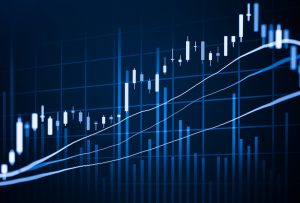 Until not too long ago, trading took place in person on the stock exchange floors. However, the 1990s saw the introduction of computers to the fold. In modern trading, everything is computerized. Quotes on instruments are done online, and buying and selling by traders takes place electronically.
Until not too long ago, trading took place in person on the stock exchange floors. However, the 1990s saw the introduction of computers to the fold. In modern trading, everything is computerized. Quotes on instruments are done online, and buying and selling by traders takes place electronically.
Algorithmic trading developed through the computerization of trading and is carried out by computers. Huge developments have been made in trading and technology since the ‘80s. Today, many investment firms make use of algorithmic trading software to automatically trade on their behalf. Automated trading plays a huge role in forex trading and CFD trading, which have become more popular recently.
What is algo trading?
Since the ‘70s, computerized trading has been available. However, it was initially more related to the ordering of programs to assist traders in successfully trading on stocks over a short period of time. These kinds of programs did not analyze the market or make any trade decisions; those tasks remained the responsibility of the trader themselves. Algo trading, or algorithmic trading, differs considerably from these programs born in the ‘70s. Algo trading software has been developed by statisticians, mathematicians and traders.
A trade is triggered when the strategy that the algorithm is based on meets all the parameters. These trading strategies are normally based on formulas, statistics, technical indicators or mathematics during the development phase of the program. Several big firms and corporations make use of algorithmic programs these days when taking part in the financial market. FIX Protocol Algorithmic Trading Definition Language is a reliable program that most large firms use.
MetaTrader 4
This platform is conducive to algorithmic trading and is used by a variety of retail stores. The programming language for the MT4, MQL4, easily allows you to create and put in place trading robots, scripts and Expert Advisors or EAs. The platform provides the opportunity for you to test your strategy against historical data that will indicate whether or not it would work in a real trading environment according to past conditions. This facility allows you to save the time that might be wasted using a strategy that has no hope of working and the money that would have been lost using such a strategy.
Strategies aplenty
Strategies related to trading are plentiful and quite diverse in nature. High-frequency trading (HFT) is one of the most popular and is used by larger trading bodies. The technology required to use it successfully is advanced and costly. Several short-term trades are undertaken and held for a period that is less than a second long. Robots or computer software purchase large numbers of instruments and sell them within fractions of a second.
Although the profit on one trade may be almost imperceptible, the figure will grow substantially when accumulated across the number of trades made. Scalping runs a close second to HFT, but it differs in the sense that the trades are held for periods ranging from one to five minutes. Scalping algorithms take very small fluctuations in the market into consideration.
Over the past years, many algebraic and mathematical formulas have been used as a means of predicting financial markets and their movements. The formulas are extremely complicated, and it isn’t possible for humans to calculate these continuously. Algorithmic computer software performs these calculations instantaneously, and trade decisions are made based on the results.
Trends are frequent in the market. Trend-following and algorithmic software is built to follow these trends based on certain criteria or indicators. Channels and trend lines are frequent indicators of these sorts of programs. Trend reversing is different from trend following software and algorithms in the sense that it doesn’t trade according to a specific trend. Instead, it identifies the trend, waits for it to end, and trades in the opposite direction.